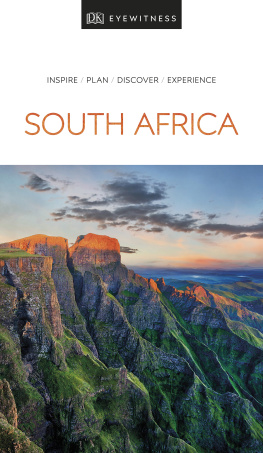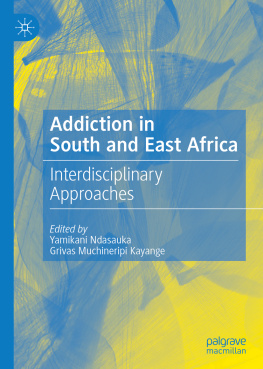
A JOURNEY
THROUGH EAST
AND SOUTH
AFRICA
Originally published in 1908, A Journey Through East and South Africa is presented as a description of a trip made by two American women to Uganda and the Transvaal in the hopes of inspiring other Americans to do the same. This most fascinating tour of Africa opens the eyes of any traveller, in particular those that enjoy a more comfortable journey. Caroline Kirkland points out that it is possible to see the planes of Africa, rich with zebras, gnus, giraffes, and even lions, from a railway carriage window. Though only claiming to have touched the surface of the vast continent, she describes the African landscape as dark, mysterious, violent and enchanting. As a woman at the turn-of-the-century, Kirkland has a particularly unique point of view, reiterating to others of her sex that it is indeed possible to test the social boundaries of that time and travel independently.
www.keganpaul.com
Kegan Paul Library of Womens Travel Writing
Editorial Advisor
Kaori OConnor
Japanese Girls and Women Alice Bacon
Korea and Her Neighbour Isabella Bird
Six Months in Hawaii Isabella Bird
Siamese Harem Life Anna H. Leonowens
A Journey Through East and South Africa Caroline Kirland
A Midsummer Ramble in the Dolomites Amelia B. Edwards
Isabella Birds Chinese Pictures Isabella Bird
A Woman in the Balkans Winifred Gordon
Market-Place at Entebbe
A JOURNEY
THROUGH EAST
AND SOUTH
AFRICA
SOME AFRICAN HIGHWAYS
CAROLINE KIRKLAND
First published in 2005 by
Kegan Paul Limited
UK: P.O. Box 256, London WC1B 3SW, England
Tel: 020 7580 5511 Fax: 020 7436 0899
E-Mail:
Internet: http://www.keganpaul.com
USA: 61 West 62nd Street, New York, NY 10023
Tel: (212) 459 0600 Fax: (212) 459 3678
Internet: http://www.columbia.edu/cu/cup
BAHRAIN:
Distributed by:
Marston Book Services Ltd
160 Milton Park
Abingdon
Oxfordshire 0X14 4SD
United Kingdom
Tel: (01235) 465500 Fax: (01235)465555
Email:
Columbia University Press
61 West 62nd Street, New York, NY 10023
Tel: (212) 459 0600 Fax: (212) 459 3678
Internet: http://www.columbia.edu/cu/cup
Kegan Paul, 2005
Printed in Great Britain
All Rights reserved. No part of this book may be reprinted or reproduced or utilised in any form or by any electric, mechanical or other means, now known or hereafter invented, including photocopying or recording, or in any information storage or retrieval system, without permission in writing from the publishers.
ISBN: 0-7103-1175-3
British Library Cataloguing in Publication Data
A catalogue record for this book is available from the British Library.
Library of Congress Cataloging-in-Publication Data
Applied for.
DEDICATED
TO MY MOTHER
THE BEST OF FELLOW
TRAVELLERS
Preface
M UCH of the material in this volume first appeared in the Chicago Tribune in 1906. I have, however, added a good deal of new matter. I have taken especial pains to bring the chapter on Sleeping-sickness up to date, with the help of official reports furnished me by authorities in that part of Africa where this terrible scourge prevails.
This narrative is, however, merely a description of a trip made by two American women to Uganda and the Transvaal. It is published with the hope of interesting other Americans in one of the most fascinating and unique tours in the world a tour which can be made with entire safety and great comfort. Where else can you look out from railway carriage windows and see zebras, gnus, giraffes, hyenas and even lions as you steam through a land? Where else will you see utter savagery and the intricate ceremony of modern social life in close contact? Where else will you see such contrasting methods side by side as you see here in Africa where English, French, Germans, Italians, Belgians and Portuguese are addressing the same problems in their different ways? And what other great continent can you circumnavigate in ease and comfort and security?
To the lover of strong contrasts, of high lights and black shadows, of wonderful scenery, of great spaces, of all that is new and free and stirring, I recommend a trip to this dark, mysterious, violent and enchanting country. We two women only touched the surface of it, but we were ever conscious of much that we could not see, nor hear, nor formulate, but which exists in a land teeming with fierce and savage life.
CAROLINE KIRKLAND.
Foreword
H OW I should like to be a woman! It must be nice to lie back in your cushions and watch the men doing things which they think very clever, knowing all the time that you can do them very much better yourself if you only care to try.
For instance: I am convinced that if women were to take up the art of scouting they would easily beat men at the game.
They have a greater natural gift of observation and a most uncannily clever knack of putting this and that together and then deducing meaning from the smallest signs.
Hence it comes that when women travel into the lesser-known countries of the world, as they frequently do nowadays, they bring this power of observation into play with remarkable results. And of all women in the world I would place our American cousins at the top of the list for this particular quality.
Unfortunately it is only too seldom that they record their impressions, but when they do their pages ripple with little touches both quaint and human which are the direct result of quick observation and which go to paint the character of countries and people far more vividly than the more erudite writings of the mere man who plods along basing his remarks very largely on what he has already read or been told of the country now spread out before him.
East Africa has only of recent years come within the range of civilized travel, and is still a land of romantic suggestion as well as of future interest, with an atmosphere of piracy and slave-trade still haunting its palm-grown coral inlets, where grave old Arab merchants roll in wealth derived from ivory both of the black as well as white variety. Here still you see barbaric tribes of naked warriors ready for blood with their war-songs and weapons. And you may yet snap the prehistoric rhinoceros on the same quarter-plate with a mighty modern locomotive on the Uganda line. Here too you can watch the Western white-clad pioneer at his work of pushing back the jungle to give room for future fields of commerce.
These and many more are things which have, it is true, been written about already by men connected with those parts, but in the present volume a lady-scout has taken them in hand from a different and less tedious point of view.










